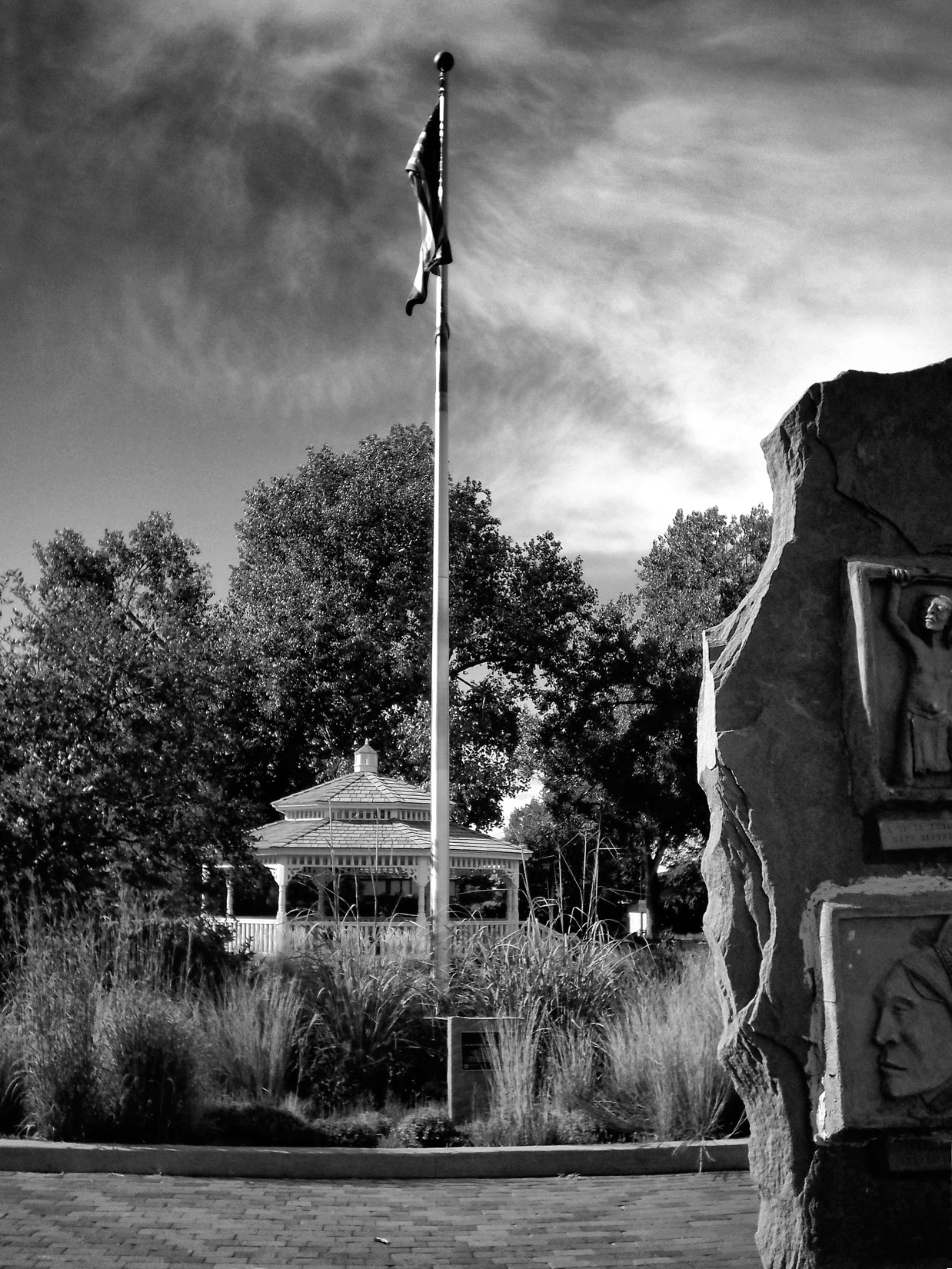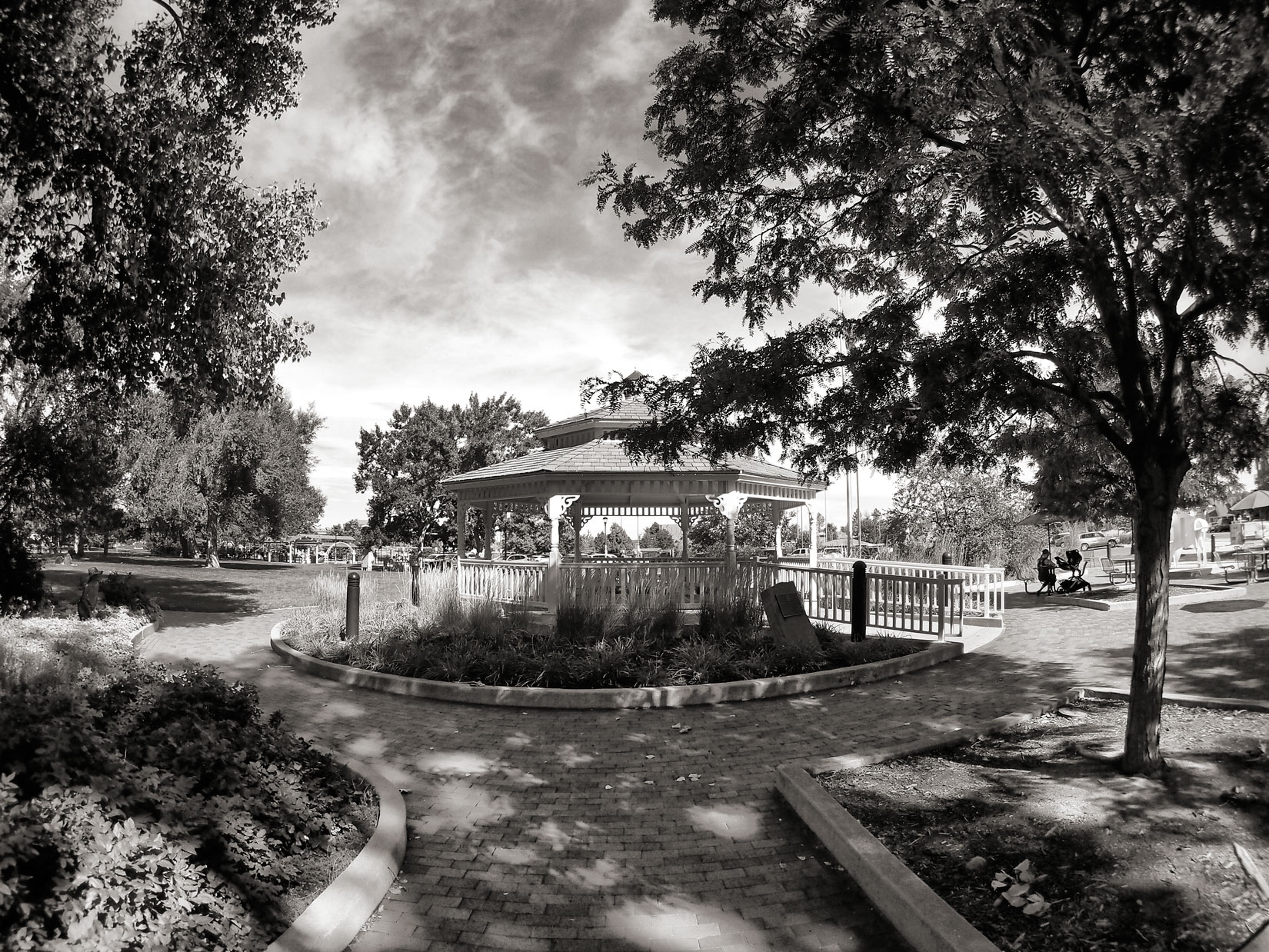Today’s Post by Joe Farace
“Color is descriptive. Black and white is interpretive.” – Elliott Erwitt
 Last week I attempted to take a monochrome PhotoWalk in Downtown Parker, Colorado only to run into a car show in progress on the streets. So I shifted gears, switched my camera into color mode and had a good time.
Last week I attempted to take a monochrome PhotoWalk in Downtown Parker, Colorado only to run into a car show in progress on the streets. So I shifted gears, switched my camera into color mode and had a good time.
This past Saturday I decided to give it another try, this time changing up my plans a little or maybe it was a lot. I started by choosing a different Micro Four-thirds camera. This time it was a 12-megapixel Olympus Pen EP-3. This was a chrome bodied model that Mary customized with brown leather coverings from Aki-Asahai making the camera handle better—less slippery—and look more retro at the same time. The other change was, although I would bring my cane along with me, I would leave it in the car and do the PhotoWalk without it.
The Olympus EP-3 has a 35-area autofocus system, not that it mattered on this particular day. Another part of my challenge was to take two of Olympus manual focusing “body cap” lenses: the 15mm f/8.0 lens aka the “Worst Micro Four-thirds lens” and the 9mm f/8 Fish Eye lens, which doesn’t get as much hate. Both have fixed apertures and use scale focusing, not that I could actually use the EP-3’s non-tilting screen to focus because…
How I Made this Photograph: I started my PhotoWalk in O’Brien Park and naturally the gazebo became my first point of focus. This image was made, literally, within a few moments of my leaving Mary’s Beetle and walking toward the gazebo. It’s an homage, of sorts, to the first photograph I made with a Kodak Brownie my parents gave me when I was eight years old. (You can read all about that here.) It was made with that “worst lens” Olympus 15mm f/8 body cap lens with an exposure of 1/1,250 sec at f/8 and ISO 400.
…shooting outdoors using only the OLED preview screen was, to put the best possible spin on it, difficult. The E-P3 has a touch-sensitive 614,000 dot OLED screen. Many times I was just taking a guess at the composition and sometimes that worked and sometimes it didn’t.
The EP-3’s accessory port is compatible with Olympus’ optional hot shoe mounted VF-2 electronic viewfinder. The VF-2 has a flip angle eyepiece, allowing viewing from 0–90 degrees but, at the time, was criticized for being unable to lock in place—the Panasonic LVF2 will lock—and being too expensive. To address these criticisms, Olympus produced the optional VF-3, which has lower resolution, a locking device, and a slightly lower price, which seems to carry over into the used market.
When doing my PhotoWalk I happened to stroll by my “wall o’bricks” and decided to do an impromptu lens test with the 9mm f/8 Fish Eye body cap lens. The results, while obviously fraught with an excessive amount of barrel distortion, showed that the lens wasn’t all that sharp, DxO rated that “worst” 15mm lens at seven or “poor” but shows no ranking whatsoever for the 9mm fish eye!

How I Made this photograph: I ended my PhotoWalk were it began at the O’Brien Park gazebo. By that time I had switched to the M. Zuiko 9mm f/8 Fish Eye body cap lens and while I’m sure this image is affected by the same barrel distortion discovered in my informal “brick wall” test, the composition seems to mitigate it. The exposure for this JPEG image was 1/320 sec at f/8 and ISO 400 with a plus one and one-third stop exposure compensation because of all the shade. I couldn’t resist adding some platinum toning from PhotoKit to give the scene a more bucolic look.
About the Olympus Pen EP-3
Olympus announced the Pen E-P3 on June 30, 2011. It was the (former) Olympus Corporation’s seventh camera in its Micro Four Thirds system. Since taking over the photographic division of Olympus, OM Systems has not yet introduced any new Pen models although they do show the 16.1-megapixel Pen EPL-10—the “L” stand for “light”— on their website, where it is still branded as “Olympus” not OM Systems. Prices are all over the place for new and used versions of that camera.
My book Creative Digital Monochrome Effects is available from Amazon with new copies at $16.16 with used copies starting at a less than two bucks, as I write this. There’s no Kindle version available, sorry.
